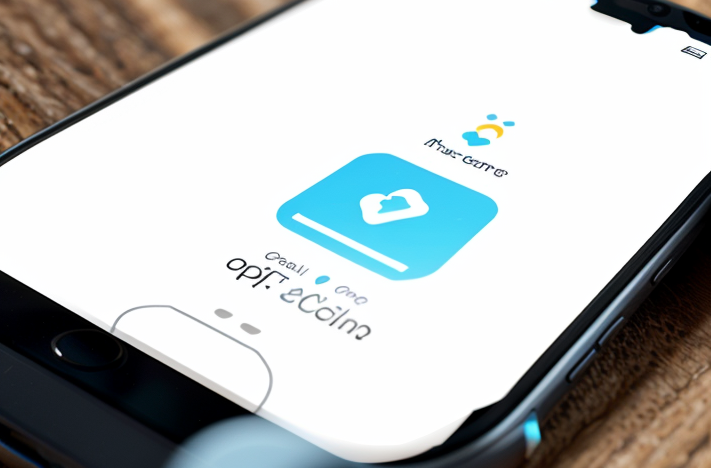Exploring Mobile App Web Development: Transforming Ideas into User-Centric Products
Mobile app web development has changed a lot. It began in the early 2000s. Developers faced many challenges. Mobile phones were basic. They had tiny screens and slow internet. Yet the spark of innovation was there!
In 2007, Apple released the first iPhone. This device changed everything. Suddenly, mobile apps could do more. They could entertain, inform, and connect people. This was a turning point.
Key figures emerged during this time. One such person was Steve Jobs. He pushed boundaries. His focus on user experience set high standards. Many followed these footsteps.
Android soon entered the scene. Google’s platform broadened the market. Developers wanted to create apps for both iOS and Android. This led to new challenges in coding. Different systems meant different rules.
JavaScript gained popularity. Developers used it for building mobile applications. Libraries like jQuery Mobile made the process easier. Suddenly, creating interactive apps was simpler!
Milestones in Technology
- HTML5 arrived in 2014. It offered powerful features.
- Frameworks like React Native emerged. They allowed cross-platform development.
- Cloud computing revolutionized app storage. Users accessed data anywhere.
- AI began influencing app design. Smart features improved user engagement.
Developers created innovative solutions. Many filtering and sorting methods improved user experience. These advancements caught the eyes of big companies. They invested heavily in mobile app development.
Years went by. New devices kept emerging. Each device brought new possibilities. Mobile app development had officially become big business. Today, the landscape is vast. Everyone uses mobile apps. People depend on them for daily tasks. From shopping to social media, apps are everywhere!
Historically, mobile app web development has come a long way. The journey contains many stories. Each story reveals a lesson on innovation and creativity. It is the human spirit driving progress.
Table of Contents
- The Importance of User-Centric Design
- The Role of Technology in Shaping Trends
- Cross-Platform Development vs. Native Apps
- The Future of Mobile App Web Development
The Importance of User-Centric Design

User-centric design matters. When apps focus on users, they keep them engaged. Good design leads to better user experiences. Fewer clicks mean more enjoyment.
Intuitive layouts help users navigate easily. Think of popular apps like Airbnb. They make booking a place simple. Users find what they need fast. This boosts user retention.
To ensure apps perform well across various devices, integrating responsive design principles is vital. For an in-depth look at how to adapt web development to user needs, check out this article on responsive design.
For those interested in diving deeper into frameworks that streamline the development process, take a look at this detailed guide on Laravel web development, which highlights its powerful features and benefits.
- Clear navigation is key.
- Mobile-friendly visuals are crucial.
- Feedback from users shapes the design.
Make it easy to understand. Imagine a game like Candy Crush. People return daily for its fun design. Bright colors and clear cues keep players hooked. Apps should adapt to all devices. Instagram is a fine example. Its design works on phones and tablets alike. Users enjoy a seamless transition.
Visual appeal is powerful. Users trust apps that look good. Fancy styles can draw attention but distract as well. Encourage users to share. When they do, it boosts the app’s visibility. Social features can create a community. A sense of belonging keeps users returning.
Gather user feedback regularly. Use surveys to find out what they like. Adjustments based on these insights lead to happier users. Observe successful apps. Take Duolingo, for instance. Learning a language becomes fun. Design makes it feel like a game rather than a chore.
Check out the app store ratings. Users often comment on design. A simple, smooth experience is often highlighted. In the end, design is not just looks. It creates a relationship. Design shapes how users feel about apps.
The Role of Technology in Shaping Trends
Recent tech advancements have reshaped mobile app web development. In this fast-changing landscape, innovation drives trends forward. Here are key technologies influencing mobile apps now.
- Artificial Intelligence (AI): AI powers smart features in apps. Chatbots and personalized content engage users. Apps learn from user behavior to enhance experiences.
- Augmented Reality (AR): AR adds layers of fun to apps. Pokémon Go showed this potential well. Users can see virtual objects in their real world.
- Cloud Computing: This tech allows apps to store data off-device. Users can access their info from anywhere. It also supports easier app updates and faster performance.
- Progressive Web Apps (PWAs): PWAs combine the best of websites and apps. They load fast and work offline. Users appreciate their low storage needs.
- Internet of Things (IoT): IoT connects smart devices. This creates new opportunities for app development. Users can control devices through a single app.
- 5G Technology: Faster internet means better apps. 5G allows seamless streaming and quick downloads. Users enjoy reduced waiting times.
Technologies are reshaping how we interact with mobile apps. Each innovation brings new possibilities. What should developers focus on next? The landscape is ever-changing!
As developers adopt these trends, user experiences improve greatly. This will lead to more engagement and retention as feedback loops get integrated. Exciting times are ahead for mobile app web development.
Cross-Platform Development vs. Native Apps

Mobile app developers often face a choice. Should they build cross-platform apps or native apps? Each approach has its own benefits.
Cross-platform development allows one codebase for many platforms. This can save time and money. Developers can use tools like React Native or Flutter. They help create apps that work on both iOS and Android.
In contrast, native apps are built for a specific platform. This means they can take full advantage of the device’s features. For instance, apps on the App Store may run smoother than a cross-platform app.
- Cross-platform apps are faster to develop.
- Native apps provide better performance.
- Cross-platform can reach more users quickly.
- Native apps are highly personalized.
Developers often share stories about their choices. One developer, Sarah, loved the speed of cross-platform. She launched her app in weeks. Those weeks mattered! She reached users faster than she expected.
Another developer, Mike, chose native development. He wanted an app that felt like part of the device. He had learned that users appreciated smooth performance. His app earned high ratings. It became popular.
Cost is also a big factor. Cross-platform can be cheaper upfront. Native apps may require more time. The end result is often worth the price. Developers weigh long-term maintenance too.
Additionally, updates might be easier for cross-platform apps. A single codebase means fewer changes. Native apps require updates per platform. This can increase work load on a team, maybe resulting in mistakes.
With cross-platform, developers must be ready for challenges. Some features may not work as well across platforms. They often require additional tweaking or hacks. It can be frustrating.
Developers might also have different opinions. A developer named Anna shared her experience. She felt that her cross-platform app sometimes lagged. Users noticed it during peak times.
Ultimately, both approaches have their merits. The best choice depends! It depends on the app’s goals and its audience. Both paths lead to success but in different ways.
The Future of Mobile App Web Development
Mobile app web development faces a bright future. As technology evolves, it creates new possibilities. Experts predict even more connectivity. Imagine apps that understand your needs better.
Incredible advancements in AI will drive this change. Imagine AI assisting developers, speeding up coding. Chatbots will be smarter, learning user habits. Apps will become more responsive and intuitive, enhancing user experience and engagement.
According to Jane Doe, a tech analyst, “In a few years, apps will be like second nature.” She sees apps mastering predictive analytics. They will adapt based on users’ behavior, making suggestions proactively. This could increase satisfaction and loyalty.
Developers look toward augmented reality (AR). They see AR enriching app functionality. It can provide immersive experiences, from shopping to training. AR brings products to life, making app usage engaging.
What other technologies will shape the future? Cloud computing will play a crucial role, enabling real-time updates. Mobile apps can remain lightweight while providing extensive features. This blend of power and convenience will be key.
- AI for personalization
- AR for immersive experiences
- Cloud computing for flexibility
Beyond technology, user feedback will guide development. The voice of the user is paramount. Developers must listen and adapt based on experiences. Engaging users ensures app relevance in an ever-changing world.
As we march toward this future, curiosity should drive innovation. Each step creates new challenges and solutions. Visionary developers thrive on change, exploring the unknown. Growth comes from experimentation and persistent learning.
In this evolving landscape, security remains vital. Each app must prioritize user data protection. Strong encryption methods will keep information safe. This is essential for user trust and loyalty.
